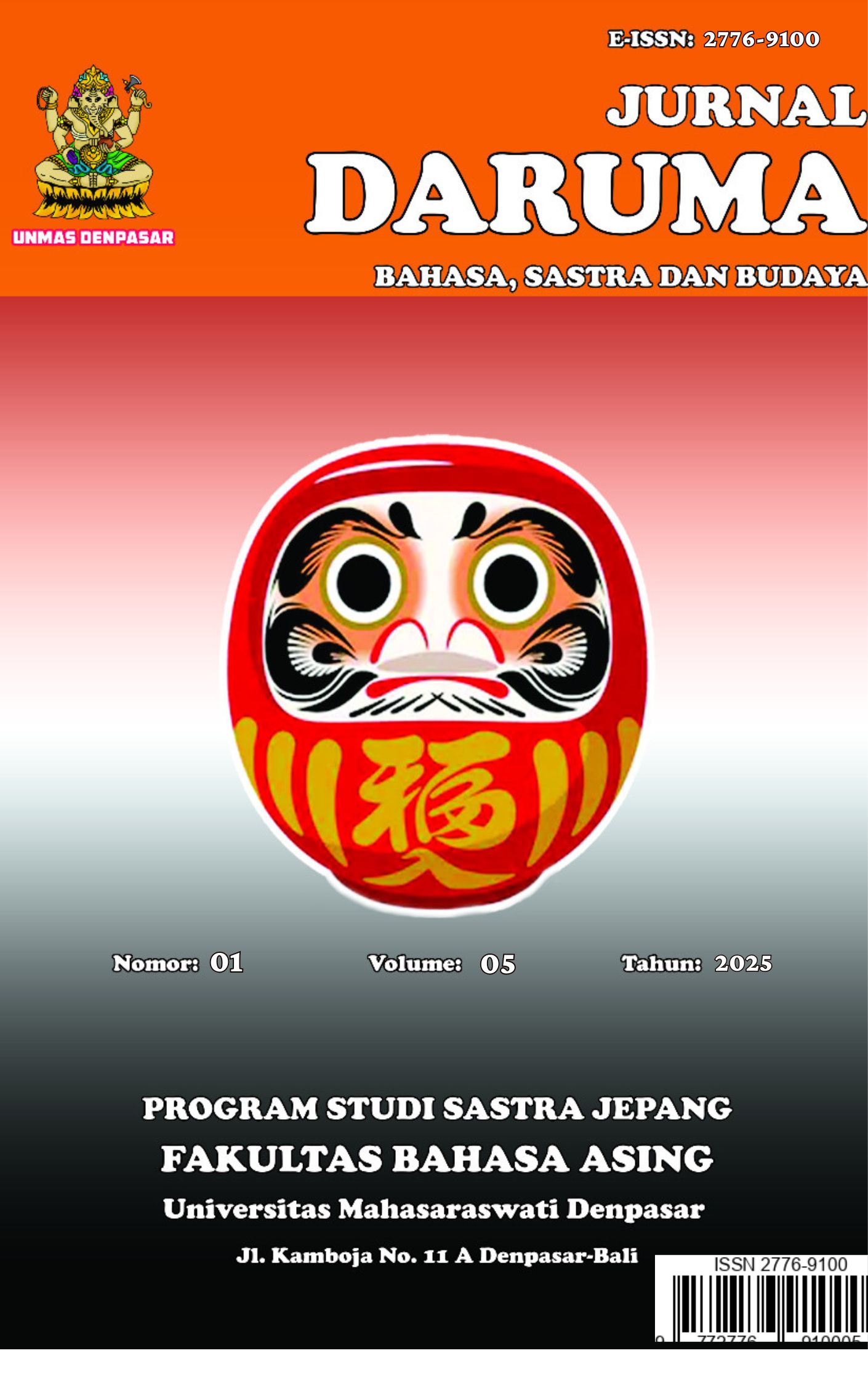PANDANGAN ANAK MUDA JEPANG TERHADAP TREND FASHION GYARU
Keywords:
Perspective, Gyaru, FashionAbstract
This research discussed about gyaru a sub-fashion that is growing in Japan. The purpose of this research is to find out the perspective of the youth in Japan towards gyaru fashion. Data was collected through a field research method by distributing questionnaires such as a Google Form to 15 Japanese youth with an age range of 20-30 years. Analysis of data in this research uses a qualitative descriptive method which will be presented in a narrative description. Theory used in this research is Globalization Theory according to Ritzer. The result obtained from this study are that Japanese youth consider that gyaru is one of the fashion trends used to express themselves. Although gyaru is popular in Japan, it cannot represent Japan in general because there are many cultures that are more appropriate as symbols of Japan. In addition, gyaru is not an original Japanese culture but a culture influenced by western culture that entered Japan. gyaru will remain popular in the future as it is accepted by many people, even children are starting to wear the gyaru trend. Not only that, many Japanese celebrities have been seen wearing gyaru trend recently on various TV show in Japan.
References
Hall, S. (1995). Representation : Cultural Representation and Signifying Practices. London: SAGE.
Kawamura, Y. (2012). Fashioning Japanese Subcultures. London: Berg.
Matsumoto. (2002). Fashion and Culture: A Study of the Japanese Youth Culture.
Nurhayati, H. (2012). Hara-Shibu-Bara, Tokyo Street Fashion Paradise. Jakarta: Grasindo.
Riansyah, F. H., & Haryanti, P. (2022). Karakteristik Street Fashion Gyaru. Mahadaya.
Ritzer, G. (2006). Globalization: The Essentials.
Sarinastiti, A., & Merdiana, A. P. (2022). Dampak Cosplay Anime Jepang Terhadap Perubahan Budaya Indonesia Bagi Remaja.
Sasanti, N. S., & Milanguni, A. H. (2024). Kimono dan Kebaya Pakaian Adat Wanita Jepang dan Jawa (Makna, Filosodi, dan Fungsinya). PRASI.
Slade, T. (2009). Japanese Fashion : A Cultural History. Berg.
Sugiyono. (2019). Metode Penelitian Kuantitatif, Kualitatif, dan R&D. Alfabeta.
Tinambuan, C. D. (2016). Pengaruh Budaya Inggris Terhadap Fashion Lolita Di Jepang.
Valdimarsdóttir, I. G. (2015). Fashion Subcultures in Japan. A multilayered history of street fashion in Japan. 18.
Yuwana, C. (2010). Makna Sakura Bagi Masyarakat Jepang. Untag.





